Effect of Bond-Slip on Dynamic Response of FRP-Confined RC Columns with Non-Linear Damping
Abstract
Featured Application
Abstract
1. Introduction
2. Numerical Model of FRP-C RC Columns Considering Bond-Slip Effect
2.1. Modeling Method for Bond-Slippage
2.2. Material Constitutive Models and Loading-Unloading Criteria
2.2.1. FRP-C RC Column Element
2.2.2. Zero-Length Section Element
2.2.3. Verification of the Proposed Model of FRP-C RC Columns Considering Bond-Slip
3. The Unit Energy Dissipation
3.1. Definition
3.2. Calculation Models
3.3. Establishment of the Unit Energy Dissipation Formula
4. Effect of Bond-Slip on the Dynamic Response of the FRP-C RC Columns
4.1. Loss Factor
4.2. Dynamic Equilibrium Equations with Nonlinear Damping
4.3. Seismic Simulation Results and Discussion
- (1)
- Firstly, because the nonlinear damping model considering the stress/displacement and amplitude of change on the influence of damping values change, even in the elastic stage of material, the damping ratio will be increased with the increase of amplitude, which conform to the material when the forced vibration energy dissipation and reflect the damping performance of materials in vibration process [43];
- (2)
- secondly, once FRP-C RC columns are considered the bond slip of longitudinal reinforcement, the component of energy dissipation and stiffness are all in a certain degree of lower. Hence, in the time history analysis, the displacement response of the proposed model by this paper compared to the other two model results is larger. That means that if the influence of longitudinal reinforcement bond-slip is taken into account, it can improve the component’s safety in the structural design;
- (3)
- thirdly, the displacement response calculated by the constant damping model attenuates faster, causing the analysis results may be too small in the seismic analysis of the structure. So the structure designed may be unsafe on this basis;
- (4)
- finally, under biaxial harmonic load, the strength and stiffness degradation of FRP-C RC columns in two bending directions affect each other, which aggravates the decline of their ductility capacity and the seismic capacity will weaken significantly.
5. Conclusions
- (1)
- By comparing with the experimental results, the proposed model of FRP-C RC column considering bond-slippage is proved to be reasonable for hysteretic dissipation energy analysis. Additionally, the relative errors of simulation and test results are less than 10%, except for the case of AR-1 specimen with a lateral displacement rate at 0.005, the relative error is 12.05%.
- (2)
- By calculating the hysteretic behavior of the proposed model under horizontal reciprocating loads, the unit energy dissipation regression formula considering steel bars’ bond-slip is established, as the Equations (17) and (18).
- (3)
- Based on the complex damping theory, the loss factor expression considering steel bars’ bond slip is established, and the damping ratio is redefined.
- (4)
- By calculating the time history responses of FRP-C RC circular and square columns under unidirectional and bidirectional harmonic loads, it can be seen that the column top maximum displacement of the proposed damping model is almost 5%~7% larger than that of the Li’s damping model and 15%~21% larger than that of the constant damping model.
Author Contributions
Funding
Institutional Review Board Statement
Informed Consent Statement
Data Availability Statement
Conflicts of Interest
References
- Lignola, G.P.; Prota, A.; Manfredi, G. Simplified Modeling of Rectangular Concrete Cross-Sections Confined by External FRP Wrapping. Polymers 2014, 6, 1187–1206. [Google Scholar] [CrossRef]
- Isleem, H.F.; Wang, D.; Wang, Z. Modeling the axial compressive stress-strain behavior of CFRP-confined rectangular RC columns under monotonic and cyclic loading. Compos. Struct. 2018, 185, 229–240. [Google Scholar] [CrossRef]
- Dai, J.-G.; Bai, Y.-L.; Teng, J.G. Behavior and Modeling of Concrete Confined with FRP Composites of Large Deformability. J. Compos. Constr. 2011, 15, 963–973. [Google Scholar] [CrossRef]
- Tabbara, M.; Karam, G. Parametric Investigation of the Effects of Localization and Slenderness on the Stress–Strain Response and Confinement Efficiency in FRP-Wrapped Concrete Cylinders. Appl. Sci. 2020, 10, 3432. [Google Scholar] [CrossRef]
- Uddin, N. Developments in Fiber-Reinforced Polymer (FRP) Composites for Civil Engineering; Woodhead Publishing Series in Civil and Structural Engineering: Sawston, UK, 2013. [Google Scholar]
- Milani, G.; Shehu, R.; Valente, M. Seismic Upgrading of a Masonry Church with FRP Composites. Mater. Sci. Forum 2016, 866, 119–123. [Google Scholar] [CrossRef]
- Di Ludovico, M.; Prota, A.; Manfredi, G.; Cosenza, E. Seismic strengthening of an under-designed RC structure with FRP. Earthq. Eng. Struct. Dyn. 2007, 37, 141–162. [Google Scholar] [CrossRef]
- Abbassi, M.; Dabbagh, H. Seismic Response of Reactive Powder Concrete Columns Confined with FRP. Slovak J. Civ. Eng. 2019, 27, 12–20. [Google Scholar] [CrossRef]
- Cai, Z.-K.; Wang, D.; Smith, S.T.; Wang, Z. Experimental investigation on the seismic performance of GFRP-wrapped thin-walled steel tube confined RC columns. Eng. Struct. 2016, 110, 269–280. [Google Scholar] [CrossRef]
- Liu, J.; Sheikh, S.A. Fiber-reinforced polymer-confined circular columns under simulated seismic loads. ACI Struct. J. 2013, 110, 941–951. [Google Scholar]
- Wang, D.; Wang, Z.; Smith, S.T.; Yu, T. Seismic performance of CFRP-confined circular high-strength concrete columns with high axial compression ratio. Constr. Build. Mater. 2017, 134, 91–103. [Google Scholar] [CrossRef]
- Liu, X.; Li, Y. Experimental study of seismic behavior of partially corrosion-damaged reinforced concrete columns strengthened with FRP composites with large deformability. Constr. Build. Mater. 2018, 191, 1071–1081. [Google Scholar] [CrossRef]
- Ozbakkaloglu, T.; Lim, J.C. Axial compressive behavior of FRP-confined concrete: Experimental test database and a new design-oriented model. Compos. Part B Eng. 2013, 55, 607–634. [Google Scholar] [CrossRef]
- Lam, L.; Teng, J. Design-oriented stress–strain model for FRP-confined concrete. Constr. Build. Mater. 2003, 17, 471–489. [Google Scholar] [CrossRef]
- Liu, H.Z.; Wang, J.P.; Zhang, Z.M.; Yuan, D.N.; Liu, L.L. Strain-dependent nonlinear damping and application to dynamic analysis of elastic linkage mechanism. J. Sound Vib. 2005, 281, 399–408. [Google Scholar] [CrossRef]
- Ozcan, O.; Binici, B.; Ozcebe, G. Improving seismic performance of deficient reinforced concrete columns using carbon fiber-reinforced polymers. Eng. Struct. 2008, 30, 1632–1646. [Google Scholar] [CrossRef]
- Balsamo, A.; Colombo, A.; Manfredi, G.; Negro, P.; Prota, A. Seismic behavior of a full-scale RC frame repaired using CFRP laminates. Eng. Struct. 2005, 27, 769–780. [Google Scholar] [CrossRef]
- Su, L.; Li, X.; Wang, Y. Experimental study and modelling of CFRP-confined damaged and undamaged square RC columns under cyclic loading. Steel Compos. Struct. 2016, 21, 411–427. [Google Scholar] [CrossRef]
- Yuanfeng, W.; Xiaoran, L. Non-linear damping of FRP-confined damaged reinforced concrete columns. Eng. Struct. 2013, 57, 289–295. [Google Scholar] [CrossRef]
- Li, X.; Wang, Y.; Su, L. Damping determination of FRP-confined reinforced concrete columns. Comput. Concr. 2014, 14, 163–174. [Google Scholar] [CrossRef]
- Zinno, A.; Lignola, G.; Prota, A.; Manfredi, G.; Cosenza, E. Influence of free edge stress concentration on effectiveness of FRP confinement. Compos. Part B Eng. 2010, 41, 523–532. [Google Scholar] [CrossRef]
- Lignola, G.; Prota, A.; Manfredi, G.; Cosenza, E. Non-linear modeling of RC rectangular hollow piers confined with CFRP. Compos. Struct. 2009, 88, 56–64. [Google Scholar] [CrossRef]
- Choi, E.; Cho, B.-S.; Jeon, J.-S.; Yoon, S.-J. Bond behavior of steel deformed bars embedded in concrete confined by FRP wire jackets. Constr. Build. Mater. 2014, 68, 716–725. [Google Scholar] [CrossRef]
- Lignola, G.P.; Nardone, F.; Prota, A.; Manfredi, G. Analytical model for the effective strain in FRP-wrapped circular RC columns. Compos. Part B Eng. 2012, 43, 3208–3218. [Google Scholar] [CrossRef]
- Fernandes, C.; Varum, H.; Costa, A. Importance of the bond–slip mechanism in the numerical simulation of the cyclic response of RC elements with plain reinforcing bars. Eng. Struct. 2013, 56, 396–406. [Google Scholar] [CrossRef]
- Harajli, M.H. Effect of confinement using steel, FRC, or FRP on the bond stress-slip response of steel bars under cyclic loading. Mater. Struct. 2006, 39, 621–634. [Google Scholar] [CrossRef]
- Harajli, M.H. Bond Stress–Slip Model for Steel Bars in Unconfined or Steel, FRC, or FRP Confined Concrete under Cyclic Loading. J. Struct. Eng. 2009, 135, 509–518. [Google Scholar] [CrossRef]
- Verderame, G.M.; Fabbrocino, G.; Manfredi, G. Seismic response of r.c. columns with smooth reinforcement. Part I: Monotonic tests. Eng. Struct. 2008, 30, 2277–2288. [Google Scholar] [CrossRef]
- Verderame, G.M.; Fabbrocino, G.; Manfredi, G. Seismic response of r.c. columns with smooth reinforcement. Part II: Cyclic tests. Eng. Struct. 2008, 30, 2289–2300. [Google Scholar] [CrossRef]
- Sritharan, S.; Priestley, M.N.; Seible, F. Nonlinear finite element analyses of concrete bridge joint systems subjected to seismic actions. Finite Elements Anal. Des. 2000, 36, 215–233. [Google Scholar] [CrossRef]
- Otani, S. Inelastic Analysis of R/C Frame Structures. J. Struct. Div. 1974, 100, 1433–1449. [Google Scholar] [CrossRef]
- Sezen, H.; Setzler, E.J. Reinforcement slip in reinforced concrete columns. ACI Struct. J. 2008, 105, 280–289. [Google Scholar]
- Zhao, J.; Sritharan, S. Modeling of Strain Penetration Effects in Fiber-Based Analysis of Reinforced Concrete Structures. ACI Struct. J. 2007, 104, 133–141. Available online: https://www.researchgate.net/publication/281456008 (accessed on 2 January 2020).
- Mazzoni, S.; McKenna, F.; Scott, M.H.; Fenves, G.L. The Open System for Earthquake Engineering Simulation (OpenSees) User Command-Language Manual; Pacific Earthquake Engineering Research Center, University of California: Berkeley, CA, USA, 2006. [Google Scholar]
- Melo, J.; Fernandes, C.; Varum, H.; Rodrigues, H.; Costa, A.; Arêde, A. Numerical modelling of the cyclic behaviour of RC elements built with plain reinforcing bars. Eng. Struct. 2011, 33, 273–286. [Google Scholar] [CrossRef]
- Scott, B.D.; Park, R.; Priestley, M.J.N. Stress-Strain Behavior of Concrete Confined by Overlapping Hoops at Low and High Strain Rates. ACI J. Proc. 1982, 79, 13–27. [Google Scholar] [CrossRef]
- Karsan, I.D.; Jirsa, J.O. Behavior of Concrete under Compressive Loadings. J. Struct. Div. 1969, 95, 2543–2564. [Google Scholar] [CrossRef]
- Lam, L.; Teng, J.G. Design-Oriented Stress-Strain Model for FRP-Confined Concrete in Rectangular Columns. J. Reinf. Plast. Compos. 2003, 22, 1149–1186. [Google Scholar] [CrossRef]
- Taucer, F.; Spacone, E.; Filippou, F.C. A Fiber Beam-Column Element for Seismic Response Analysis of Reinforced Concrete Structures; Earthquake Engineering Research Center, College of Engineering, University of California: Berkeley, CA, USA, 1991. [Google Scholar]
- Yoneda, K.; Kawashima, K.; Shoji, G. Seismic retrofit of circular reinforced bridge columns by wrapping of carbon fiber sheets. Doboku Gakkai Ronbunshu 2001, 682, 41–56. [Google Scholar] [CrossRef]
- Lazan, B.J. Damping of Materials and Members in Structural Mechanics; Pergamon Press: Oxford, UK; London, UK, 1968. [Google Scholar]
- Yu, Q.; Tao, Z. New Type Composite Structure Column—The Experiment, Theory and Methods; Science Press: Beijing, China, 2006; pp. 317–351. [Google Scholar]
- Li, X.R. Non-Linear Damping Properties and Dynamic Response of FRP-Confined Reinforced Concrete Columns. Ph.D. Thesis, Beijing Jiaotong University, Beijing, China, July 2013. [Google Scholar]

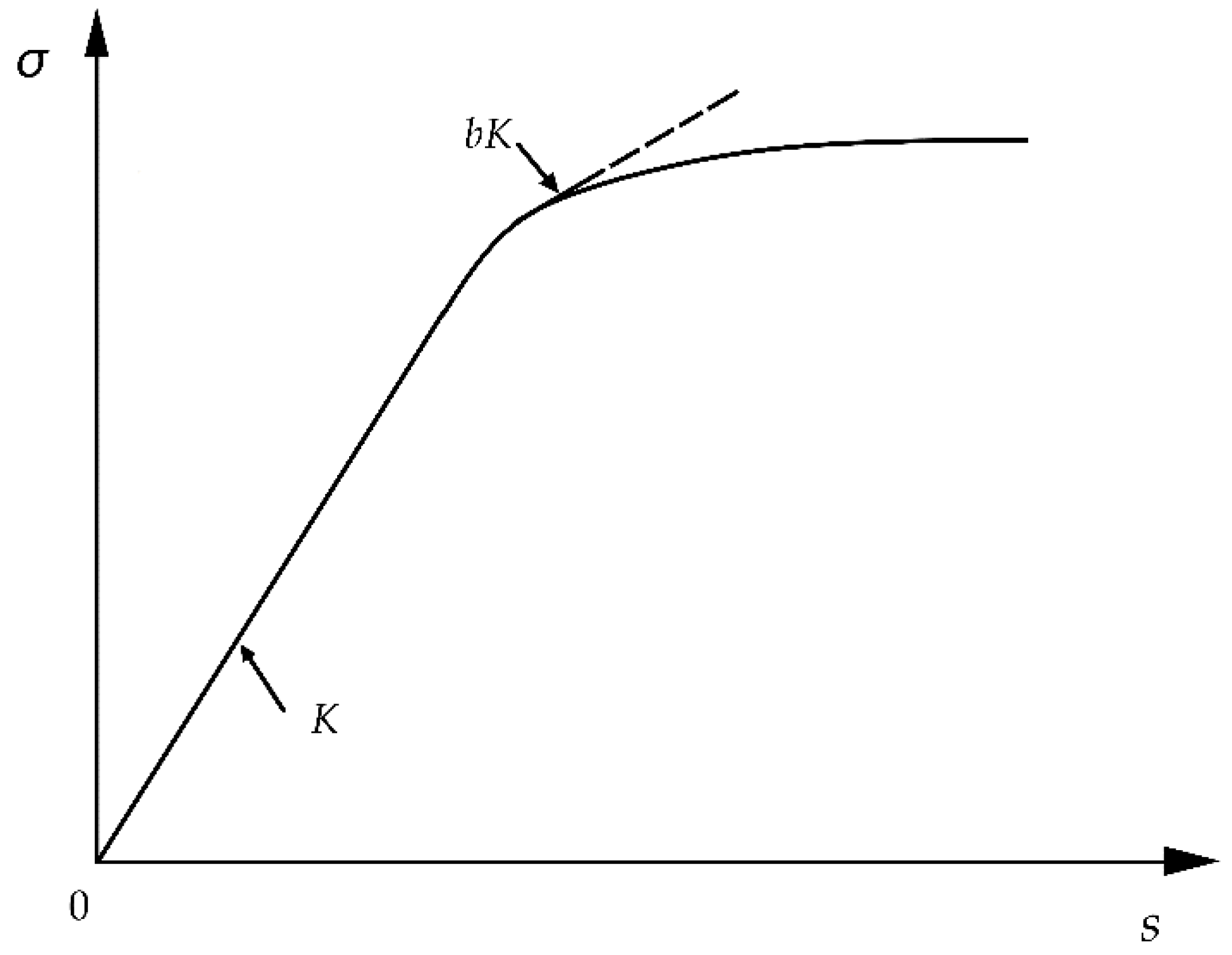
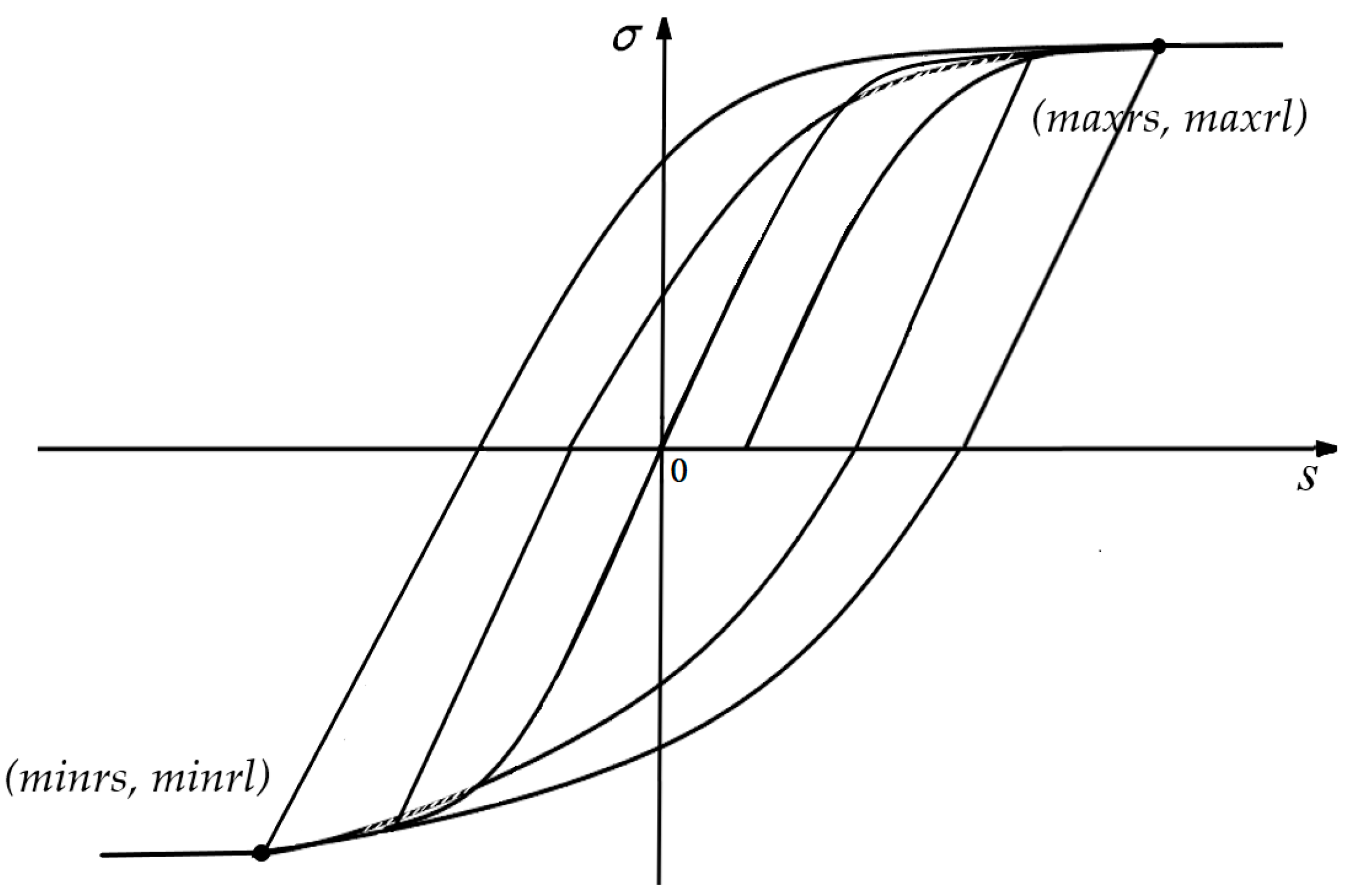
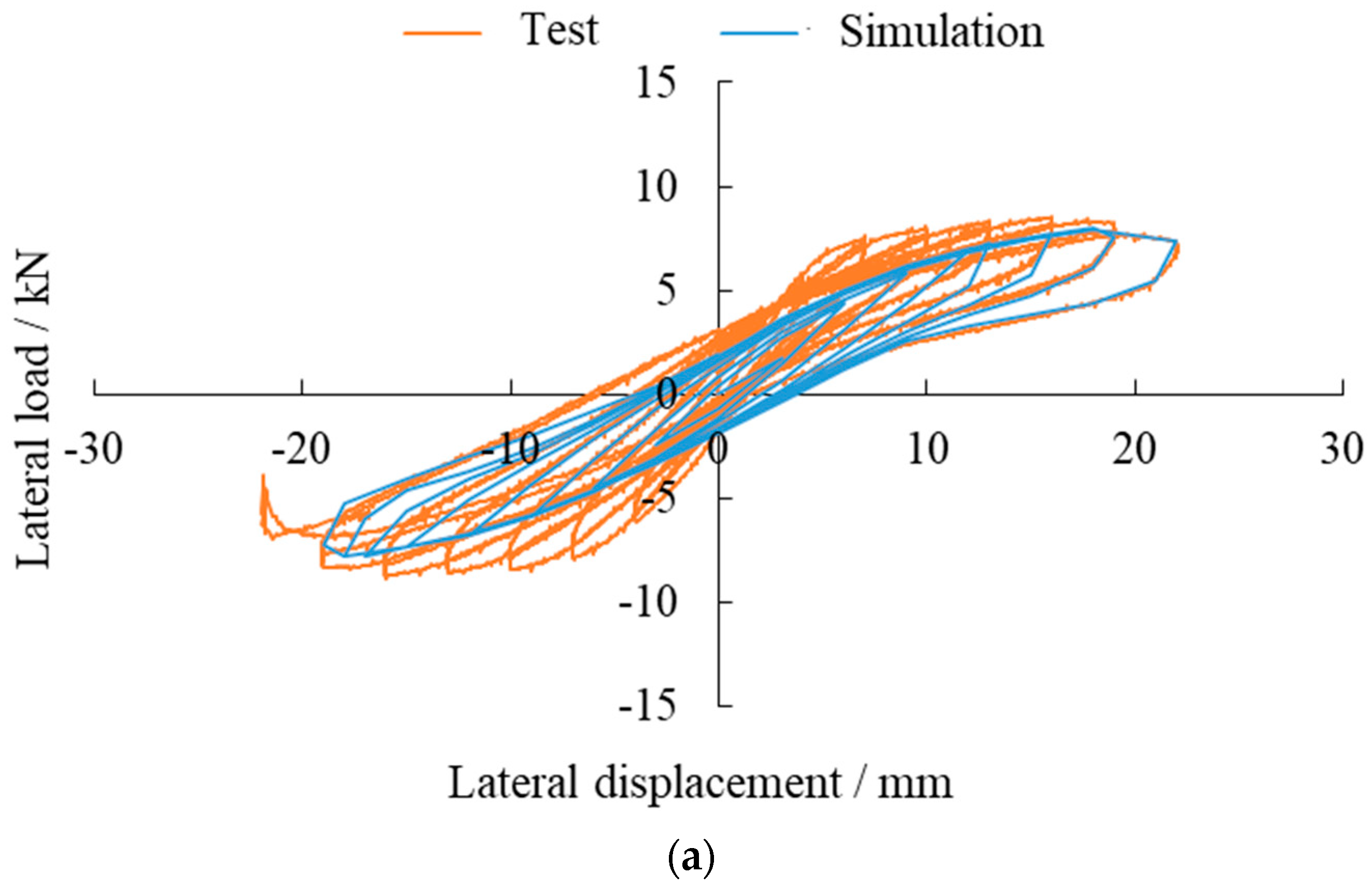
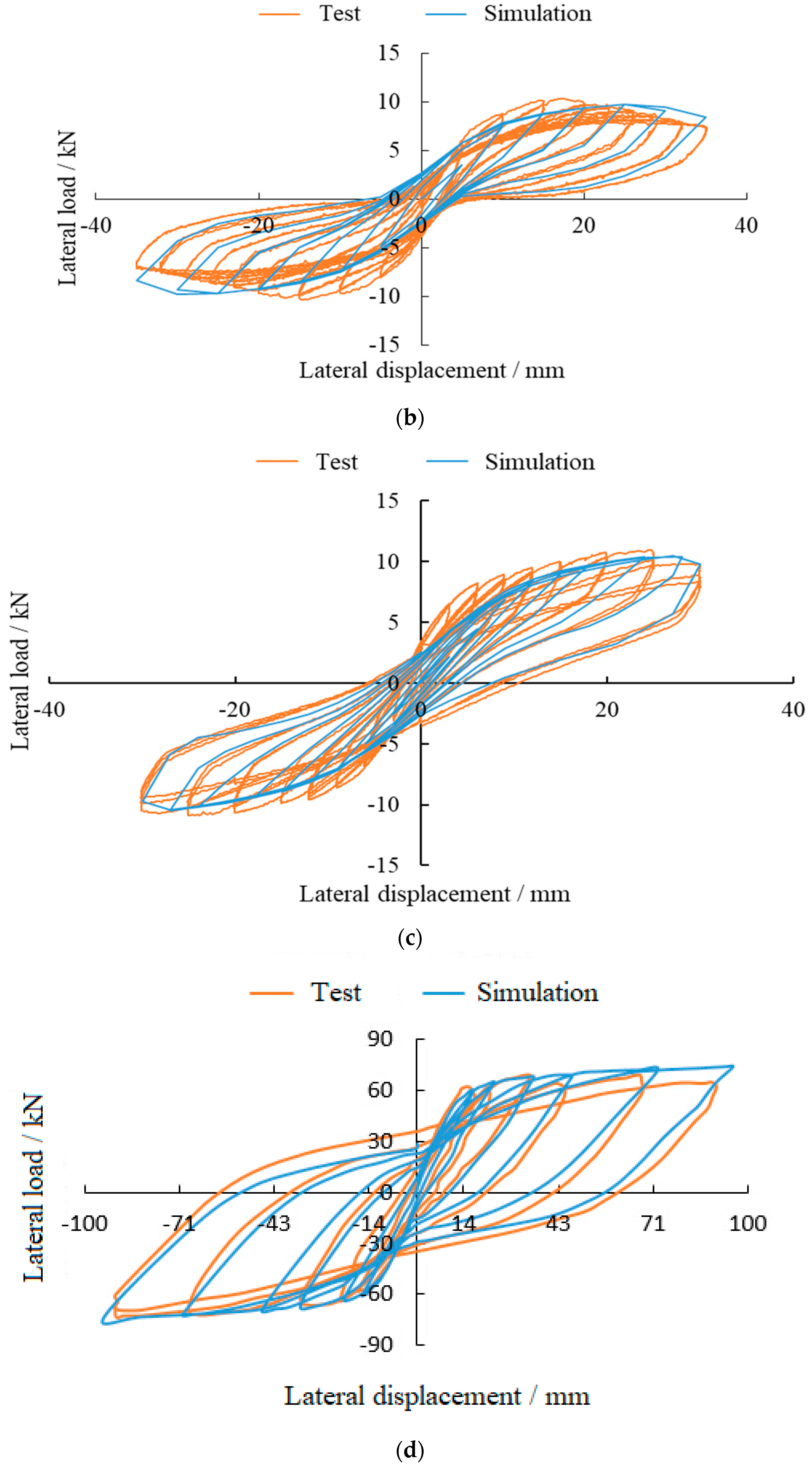
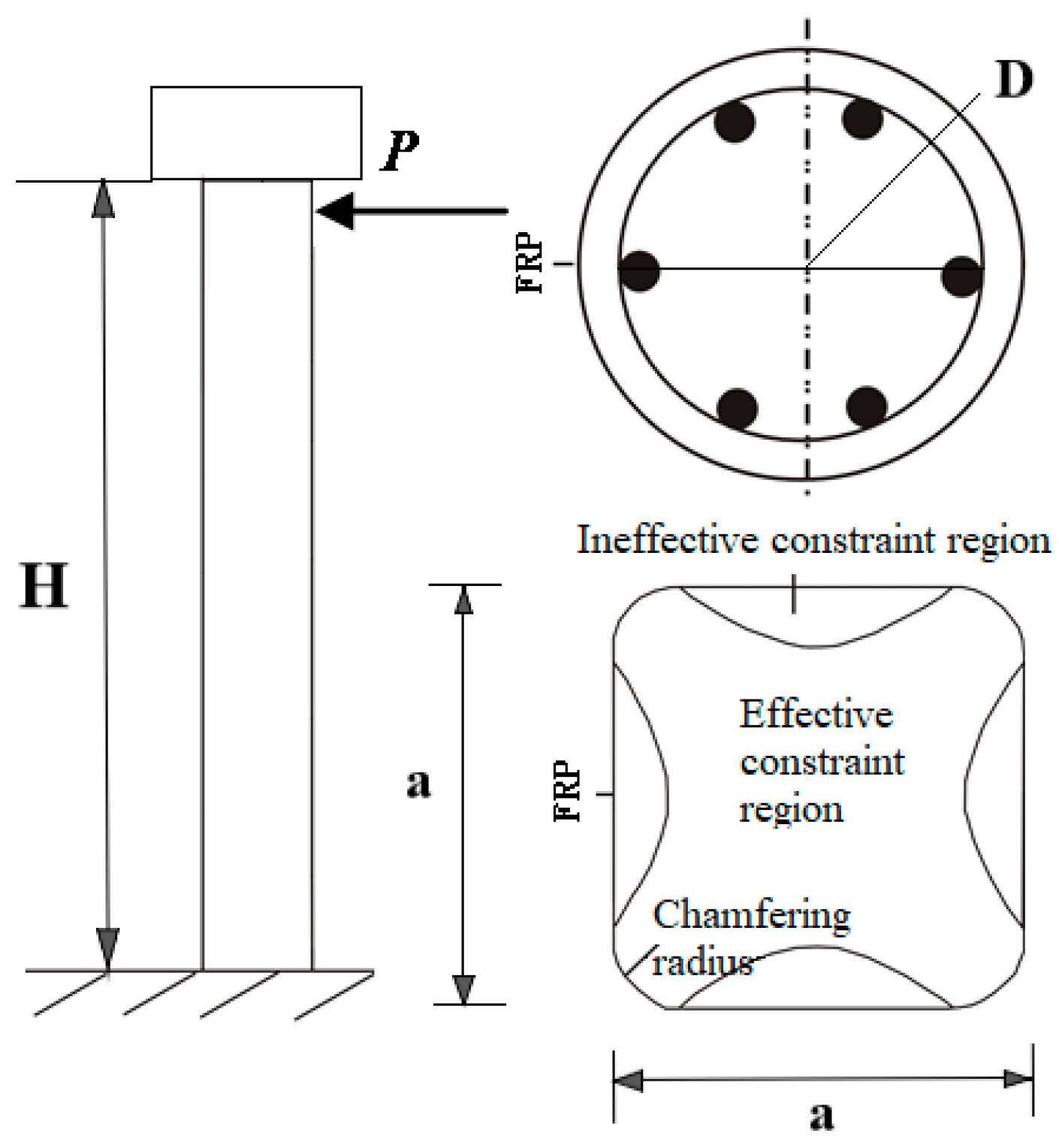
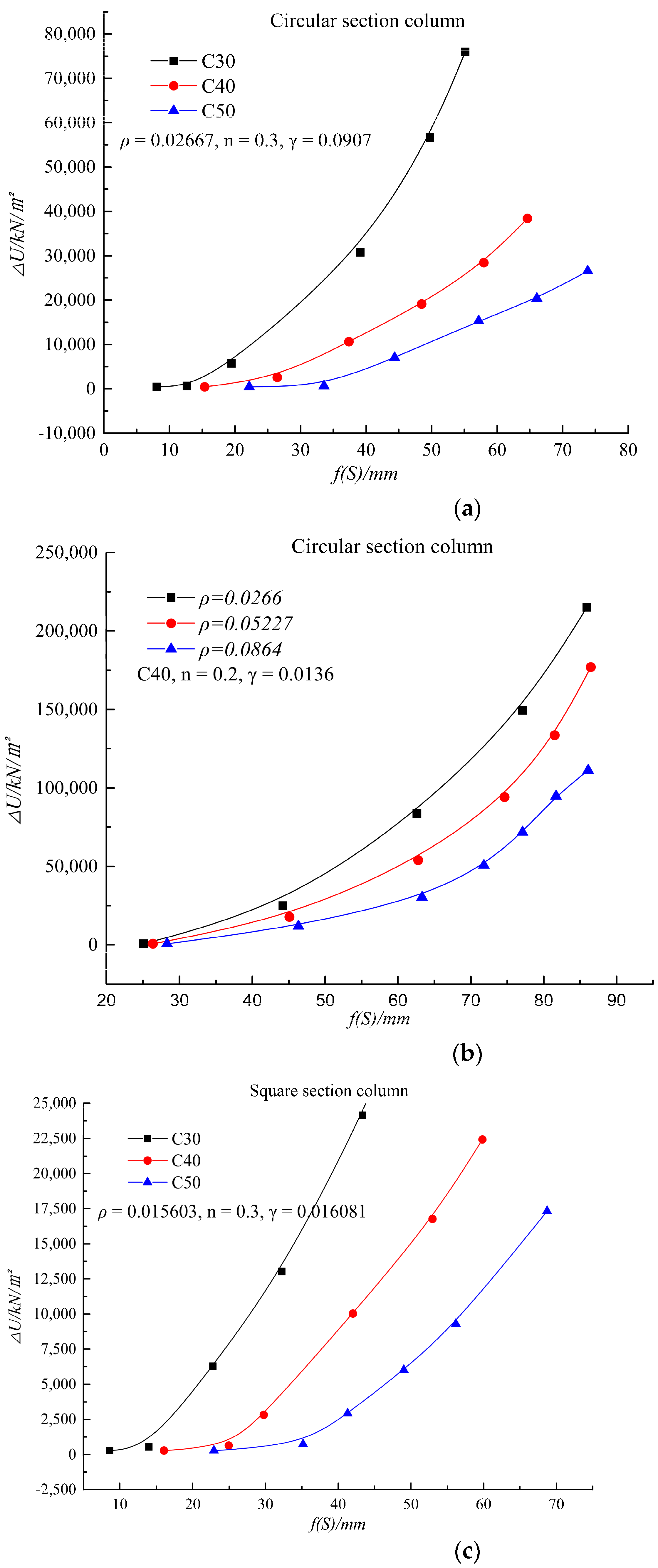
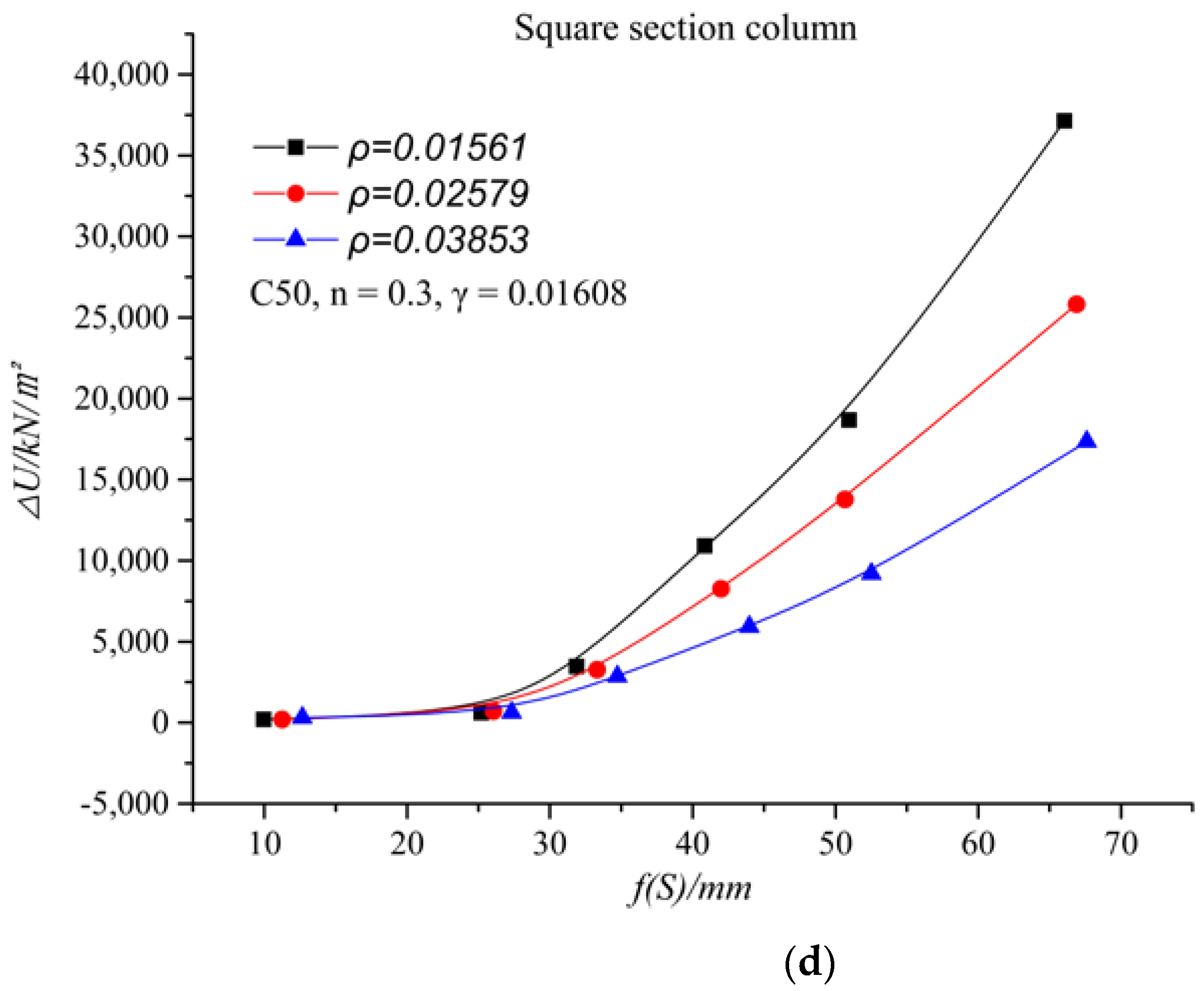

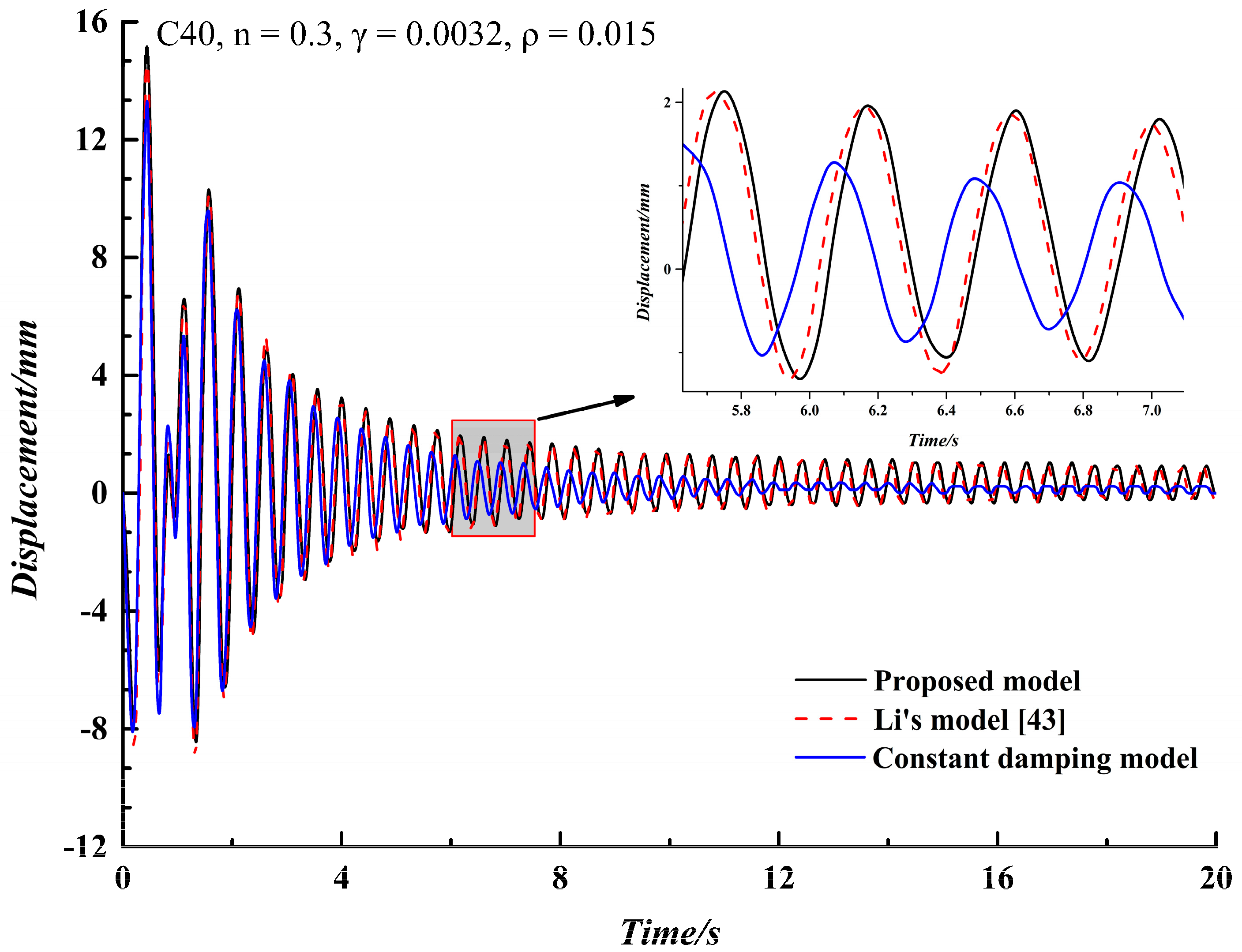

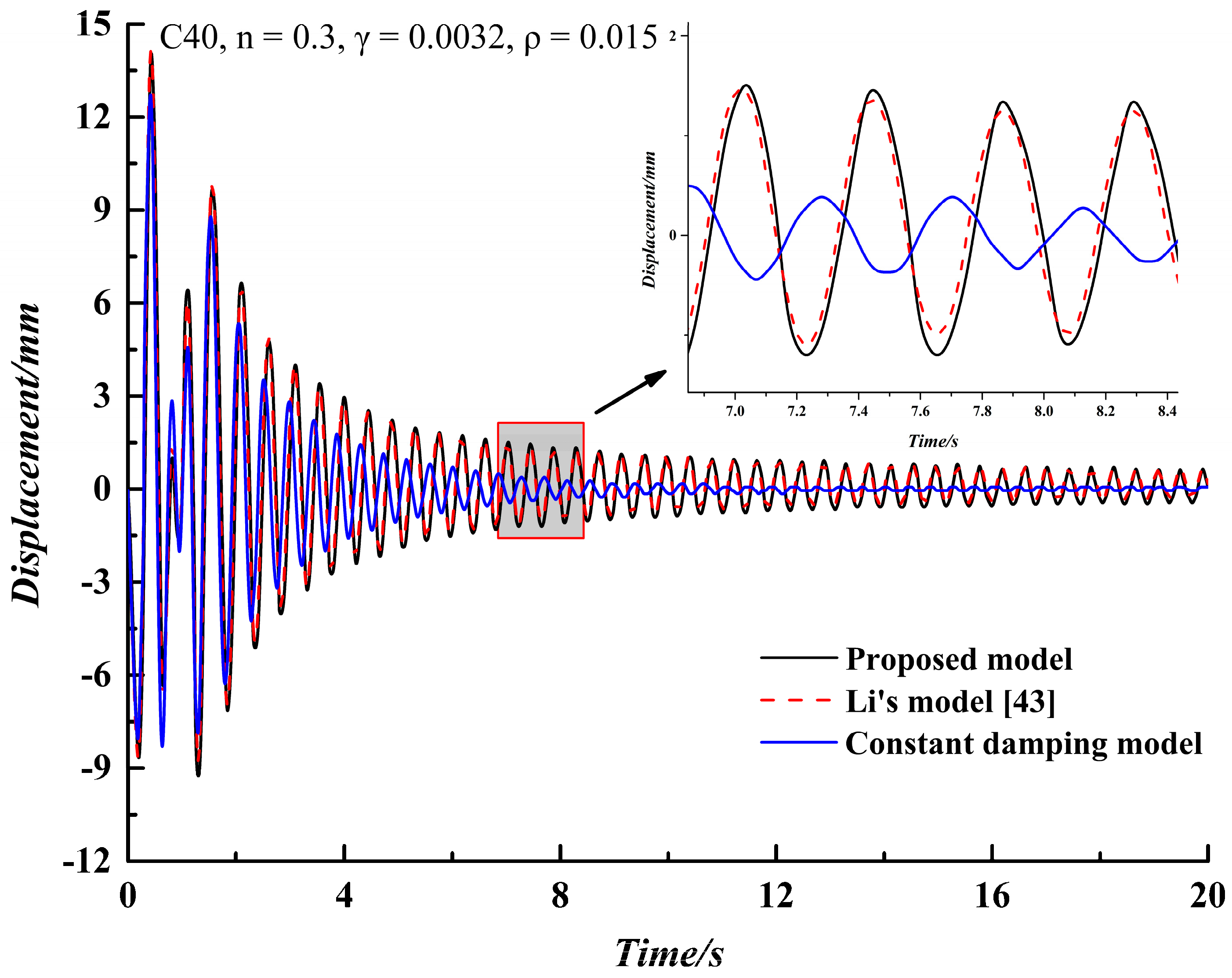
| Specimen | Compare the Item | Value of Calculated Results | ||||
|---|---|---|---|---|---|---|
| AR-1 [18] | Lateral drift rate | 0.002 | 0.005 | 0.009 | 0.011 | 0.013 |
| Tests data | 5.16 | 31.36 | 76.85 | 118.66 | 157.52 | |
| Numerical results | 5.03 | 27.58 | 70.63 | 108.28 | 147.83 | |
| Relative error (%) | 2.52 | 12.05 | 8.09 | 8.75 | 6.15 | |
| BR-1 [18] | Lateral drift rate | 0.002 | 0.005 | 0.009 | 0.014 | 0.018 |
| Tests data | 3.30 | 30.65 | 83.28 | 191.90 | 288.12 | |
| Numerical results | 3.15 | 28.37 | 77.32 | 185.89 | 267.95 | |
| Relative error (%) | 4.55 | 7.44 | 7.16 | 3.13 | 7.00 | |
| Tall circular column [40] | Lateral drift rate | 0.002 | 0.0033 | 0.046 | 0.006 | 0.073 |
| Tests data | 70.83 | 445.38 | 896.75 | 1379.16 | 1882.67 | |
| Numerical results | 65.1 | 422.35 | 810.92 | 1301.75 | 1743.83 | |
| Relative error (%) | 8.09 | 5.17 | 9.57 | 5.61 | 7.37 | |
| Parameters | ||||
|---|---|---|---|---|
| Cross section type | Concrete strength /MPa | Reinforcement ratio /% | FRP volume /% | Axial compression ratio/n |
| Circular column | 30, 40, 50 | 2.67 ((Φ = 10 mm)), 5.23 (Φ = 12 mm), 8.64 (Φ = 18 mm) | 0.45 (1 layer), 0.91 (2 layer), 1.36 (3 layer) | 0.1, 0.2, 0.3 |
| Square column | 30, 40, 50 | 1.56 (Φ = 14 mm), 2.58 (Φ = 18 mm), 3.85 (Φ = 22 mm) | 0.32 (1 layer), 0.96 (3 layer), 1.61 (5 layer) | 0.1, 0.2, 0.3 |
| Cross Section Form | External Load | D1/mm | D2/mm | D3/mm | (D1–D2)/D2 | (D1–D3)/D3 |
|---|---|---|---|---|---|---|
| Circular column | Uniaxial harmonic load | 13.1 | 12.5 | 11.2 | 4.80% | 16.96% |
| Biaxial harmonic load | 12.9 | 12.3 | 11.6 | 4.87% | 11.21% | |
| Square column | Uniaxial harmonic load | 15.9 | 14.8 | 13.0 | 7.43% | 22.31% |
| Biaxial harmonic load | 15.6 | 14.7 | 12.8 | 6.12% | 21.88% |
Publisher’s Note: MDPI stays neutral with regard to jurisdictional claims in published maps and institutional affiliations. |
© 2021 by the authors. Licensee MDPI, Basel, Switzerland. This article is an open access article distributed under the terms and conditions of the Creative Commons Attribution (CC BY) license (http://creativecommons.org/licenses/by/4.0/).
Share and Cite
Guo, K.; Guo, Q.; Wang, Y. Effect of Bond-Slip on Dynamic Response of FRP-Confined RC Columns with Non-Linear Damping. Appl. Sci. 2021, 11, 2124. https://doi.org/10.3390/app11052124
Guo K, Guo Q, Wang Y. Effect of Bond-Slip on Dynamic Response of FRP-Confined RC Columns with Non-Linear Damping. Applied Sciences. 2021; 11(5):2124. https://doi.org/10.3390/app11052124
Chicago/Turabian StyleGuo, Kun, Qirui Guo, and Yuanfeng Wang. 2021. "Effect of Bond-Slip on Dynamic Response of FRP-Confined RC Columns with Non-Linear Damping" Applied Sciences 11, no. 5: 2124. https://doi.org/10.3390/app11052124
APA StyleGuo, K., Guo, Q., & Wang, Y. (2021). Effect of Bond-Slip on Dynamic Response of FRP-Confined RC Columns with Non-Linear Damping. Applied Sciences, 11(5), 2124. https://doi.org/10.3390/app11052124






